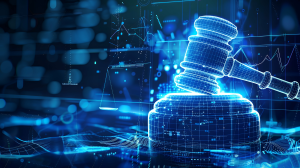What if AI could provide accurate legal advice? What if it could guide you through complex patent issues, even if you have no prior experience in the field? This November, the University of Luxembourg is making that possibility a reality. As part of the FNR Core Programme and in collaboration with the Polish Funding Agency and AGH University in Krakow, the research team at the Department of Computer Science is launching its first AI-powered legal assistant, specifically tailored to patent law.
A leap forward in integrating AI within patent law
The release of this AI-driven legal bot marks a significant advancement in the application of artificial intelligence in legal practice. While existing AI tools such as large language models (LLMS) or specialised platforms provide valuable decision-making support, they often lack of guaranteed accuracy in legal matters. The new AI assistant developed by the University of Luxembourg aims to close that gap, delivering highly accurate legal insights tailored specifically to the complexities of patent law.
‟ This is a revolutionary advancement in the use of AI for legal purposes. Our goal is to provide users with guidance they can trust while navigating patent law, with accuracy as our top priority.”

Research scientist
Empowering laypeople and inventors
The AI assistant has been designed to help non-experts. Inventors can rely on its accuracy and simplicity to understand complex legal rules and issues without needing advanced knowledge in this field. By making legal advice more accessible, affordable, and accurate, this bot empowers users to make more informed decisions. While it won’t replace the role of lawyers—especially when it comes to drafting a patent application—the tool democratises legal knowledge. This helps level the playing field for entrepreneurs and innovators, especially in fast-moving fields like technology and intellectual property.
“With this AI tool, legal complexities no longer need to be a barrier to innovation, making patent law more accessible and manageable for all.”, adds Adam Kaczmarczyk, Software Developer at the University of Luxembourg
How does it work?
The bot works by helping users navigate legal issues related to patents, using a structured question-and-answer approach. This comprehensive process addresses everything from problem identification to legal recommendations, aiming to gather as much relevant information as possible.
The process, step by step:
- User Problem Identification: The user is asked to confirm that their problem is indeed related to European Patent Law.
- Problem Category Verification: The bot processes and verifies the input to confirm that the issue falls within the patent-related category.
- Permission to Ask Legal Questions: Before proceeding further, the bot requests permission to ask legal questions. The user can respond with “yes,” “no,” or “unsure” to confirm whether they are comfortable proceeding.
- Legal Questioning Process: Once permission is granted, a series of yes/no/unsure questions are asked to gather detailed information about the user’s situation. These questions aim to clarify the issue and gather necessary legal details.
- Support for User Responses: To help the user in answering questions accurately, the tool provides “Further Info” about relevant legal concepts. If applicable, it also shares related case law to show examples where courts have ruled positively or negatively in similar situations. This helps the user make informed decisions.
- Legal Recommendation: After enough questions have been answered, the tool provides a recommendation. This advice can be trusted as long as the answers have been answered correctly. If the user cannot answer a specific question, they are advised to seek legal counsel. However, if they can answer all questions, they can trust the final recommendation.
The number of questions asked will vary based on the user’s responses, ensuring that the system covers all relevant details before giving any recommendation.
Paving the way for a new era of law
By offering an intuitive, reliable, and accessible tool for navigating patent-related issues, the assistant not only improves the efficiency of legal processes but also highlights AI’s potential to transform traditionally complex and opaque areas of law, broadening access to justice.
Looking ahead, the research team envisions expanding the tool’s capabilities to other legal fields, broadening its impact across the legal profession. While it currently focuses on patent law, additional developments are already underway. “This the very first version,” explains Tomer, “but users can already expect improvements based on their feedback, enhanced algorithms, and more.”
As AI technologies continue to evolve, they may increasingly shape the future of legal practice and offer precision and empowerment in ways that were once unimaginable.
